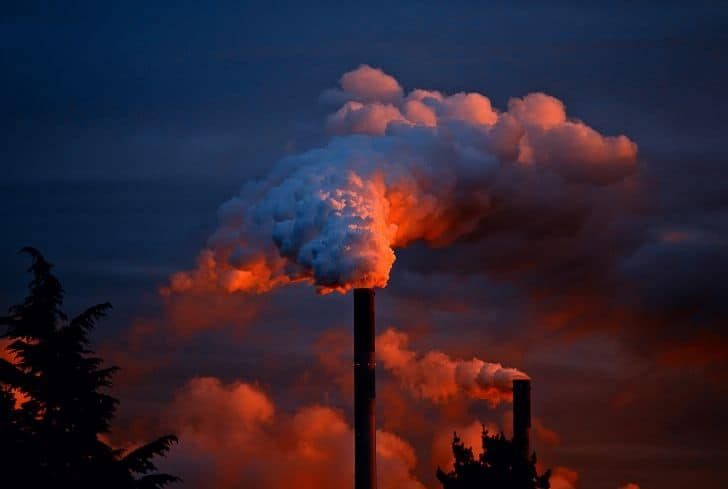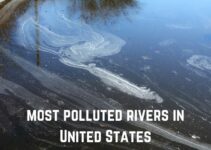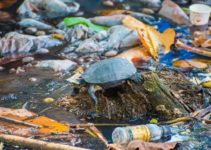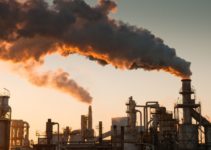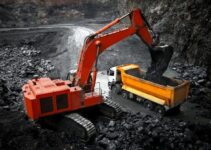Air pollution is an acknowledged widespread problem, it affects all life forms. However, when we think of air pollution, we most likely don’t conjure up images of plants and animals. But because we are co-existing, knowing how atmospheric pollution is affecting wildlife is important. In this article, we’re going to answer some of the common questions about air pollution and its effects on plants and animals.
Presence of unwanted substances in the air that could hinder the normalcy and wellbeing of the atmosphere and the living beings. Another way of looking at air pollution could be any physical, chemical, or biological alteration to the air.
Natural Causes of Air Pollution
Anything humans do that involves burning things, using chemicals, or producing piles of dust has the potential that can cause air pollution.
Air pollution is not a 100% man-made problem, some kinds of air pollution occurs naturally, too. For example,
- Wildfire: The huge swatches of smoke produced by the forest fire is a poisonous mix of carbon dioxide, carbon monoxide, nitrogen dioxide, formaldehyde, and acetaldehyde – all known for warming the planet.
- Volcano eruption: Giant volcanic eruptions spew ashes and a huge amount of sulfur gases, as well as many hundred tons of carbon dioxide (CO2). The sulfur gases when combining with water vapor in the atmosphere and form sulfurous and sulfuric acid, which are detrimental to humans, plants, and animals.
- Radioactive decay of rocks: Igneous rocks (Granite) and sedimentary rocks (limestone) contain radioactive isotopes. When uranium in the rocks decays, radon, a naturally occurring radioactive gas is emitted. It is colorless, odorless, tasteless gas and disperses quickly into the air. When inhaled it causes serious respiratory disorders and can lead to fatal lung cancer.
Major Air Pollutants
Any gas, aerosol (liquids or solids dispersed through gases), or particles could qualify as air pollutants if they have reached a concentration high enough to harm.
The ones top the list are,
- Sulfur dioxide (SO2): Emitted during the combustion of sulfur-containing fossil fuels, such as coal and petroleum. In moist conditions, it becomes sulphuric acid, causing acid rain and smog.
- Carbon monoxide (CO): It is formed when fuels have too little oxygen to burn completely. This highly dangerous gas contributes to the greenhouse effect, smog, and acidification.
- Carbon dioxide (CO2): It isn’t generally considered as a ‘pollutant’ but higher concentrations can contribute to global warming and climate change.
- Nitrogen oxides: Nitrogen dioxide (NO2) and nitrogen oxide (NO) pollution come from vehicle engines and power plants. They are also known as “indirect greenhouse gases”.
- Volatile organic compounds (VOCs): Derived from petrol and gasoline reservoirs, industrial plants, paint, and varnishes, or agricultural activities. VOC air pollution plays an important role in ozone shaping in the lower atmospheric layer.
- Particulates: Arise from natural sources, such as volcanoes, or human activities, such as combustion or traffic.
- Ozone: Also called trioxygen, ozone is formed via photochemical transfer of oxygen. It causes smog and contributes to acidification and climate change.
- Lead and heavy metals: Aerosols of lead and other toxic heavy metals also contribute to air pollution.
How Does Air Pollution Kill Plants and Animals?
Similar to humans, air pollution is a death warrant for plants and animals.
Acid rain resulting from air pollution makes waters and soil more acidic, killing wildlife outright. Phytoplankton’s in lake die, fishes end up relocating their native location or develop respiratory problems, and insect and amphibian population decline.
Speaking of plants, acid rain limits available soil nutrients, damages root, and shoot system, results in stunted growth and eventually kills them. Some plant and animal species are immune to the fluctuated pH levels, however, in an interconnected ecosystem, it wreaks havoc in the food chain and may even wipe off an entire species.
Ozone shield depletion is said to exert an ‘indirect’ kill mechanism on plants and animals. Worldwide data show that the ozone hole has wiped off approximately 30% of plant species.
The UV rays restricted photosynthesis, increased rate of evaporation, and brought in genetic mutations in plants. The results of the study conducted by the University of California showed that UV-B radiation reduces the fertility of many gymnosperm lineages and contributing to mass extinction.
Ozone depletion wasn’t easy on aquatic and terrestrial animals either – habitat destruction to extinction were (and still are) the consequences.
Polluted air with carcinogens and neurotoxicants is fatal for animals. Studies show that domesticated and wild animals have an increased risk of developing acute cardiovascular events and the development of coronary artery disease. Air pollution is also linked to premature death in animals.
How Does Air Pollution Affect Animals?
Toxic air is a threat to wildlife and biodiversity. The visual impact may not be obvious if not closely looked into, but from the evidence effect is deleterious.
- Altered animal behavior: An increasing number of studies demonstrated that pollutants can trigger bizarre behavior in animals. For example, endocrine disruptors, heavy metals, and PCBs have a direct influence on the social and mating behaviors of animals.
- Diseases and Mortality: In most cases, the effect is indirect but slowly kills animals by disrupting biological processes. Air pollutants disrupt endocrine function, cause organ injury, increase vulnerability to stresses and diseases, lower reproductive success. Prolonged exposure to air pollutants can increase the expression of markers of neurodegenerative disease pathologies.
A study by Bianca Cox et al found ambient air pollution-related mortality in dairy cattle. Organ toxicity arising from CFCs and NH3, volatile organic compounds (VOC), Mercury, CO, NOx, and SO2 is a silent killer, taking the lives of wildlife.
- Biodiversity loss: Air pollution is a major driving force changing the basic structure and function of ecosystems. For example, excess deposition of airborne nitrogen (N) in the form of ammonia is among the main stressors to biodiversity. Biodiversity is critical for animals because an impairment can result in alterations in the food chain and loss of certain species. Biodiversity loss can also increase the risk of infectious diseases.
- Change in species distribution: Industrial air pollution can cause a change in the abundance of a particular species. For example, the loss of certain fish species due to higher aluminum levels may allow insect species to increase, which may in turn benefit ducks that feed on insects. But this loss could be detrimental to eagles, ospreys, and other animals that depend on fish as their food.
Which Animals Are Most Affected by Air Pollution?
Birds are among the first to get affected by the noxious mix of pollutants. Birds have a more efficient respiratory system than any other species hence they are directly and indirectly affected by air pollution. They spend more time in the open air, exposing them to greater levels of toxic fumes coming from vehicles, power plants, and factories.
Air pollutants disrupt bird communities. Ozone (O3) and nitrogen oxides (NOx) cause direct, irreversible damage to birds’ lungs. Long-term exposure can lead to lung failure, poor immune system and reproductive success, population decline, and more.
Exposure to polycyclic aromatic hydrocarbons (PAHs), toxic chemicals emitted by traffic, may cause reduced egg production and hatching, increased brood abandonment, and growth impairments in birds.
How do Plants Get Affected by Air Pollution?
Plants and crops are at the forefront of air pollution. Since the aerial surfaces of plants, particularly leaves are in direct contact with the atmosphere, they absorb or absorb air pollutants very quickly. The pollutants then induce oxidative stress producing free radicals and reactive oxygen species (ROS) that cause damage at different levels.
- disruption of the cellular metabolism
- degradation of chlorophyll
- mineral deficiencies
Ozone (O3) affect photosynthesis in most plants and cause foliar lesions. It can also enter the stomata (the openings aiding respiration in plants) and decay plant cells directly. O3 may also cause stunted growth, and in severe cases, death. Brown patches on potato leaves is an example of moderate ozone damage.
Acid rain, lead toxicity, and exposure to nitrogen oxides interfere with nutrients available for plants. In crops, this will manifest in reduced yield.
Which Plants are Most Affected by Air Pollution?
Plants take up a variety of atmospheric pollutants, including both ozone and nitrogen oxides, heavy metals, smoke, and particulate matter. The plants that are super sensitive to air pollutants include,
- Trees – American Columbo, Green Dragon, Rosewood or Tipu, Quaking Aspen, Phantom Orchid, Honeylocust, Walnut, Poplar, Oak, Willow, and more.
- Crops – Wheat, Rice, Tomato, Watermelon, Squash, Potato, Tobacco, Soybeans, Cantaloupe, Muskmelon, Alfalfa, Beets, Sunflower, Carrots, Sweet Corn, Gourds, Green Peas, Turnips, Grapes, Peaches, and Strawberries.
- Shrubs – Ponderosa pine, Crabapple, and Citrus
- Leafy greens – Spinach and Celery
Do Air Pollution Help Plants Grow?
No. Recent studies show that plant growth may be stunted worldwide by the end of the 21st century. Because,
- Mounting ozone concentration reduces the rate of photosynthesis and cripples the plants’ ability to grow.
- Mobilized aluminum (arising from acid rain) damages the plant root system. This interferes with calcium uptake which translates into slow or stunted growth.
- Excess nitrogen dioxide is detrimental to plant growth.
References:
https://www.sciencedirect.com/science/article/pii/S1161030118301606
https://advances.sciencemag.org/content/4/2/e1700618
https://www.hindawi.com/journals/bmri/2014/736385/
https://www.ncbi.nlm.nih.gov/pmc/articles/PMC5400059/
http://pubs.er.usgs.gov/publication/5224791
https://www.tandfonline.com/doi/pdf/10.1080/00966665.1956.10467730
